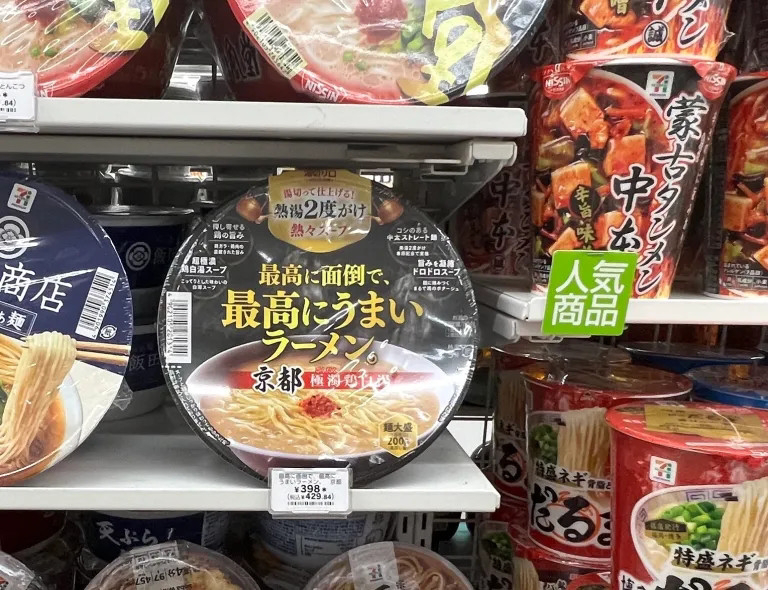How Ramyun Became Korea’s Strongest Business and Boosted Its Economy
Korea is globally celebrated for its K-pop, K-dramas, and cutting-edge technology, but there's one humble item that has become a silent powerhouse in the nation’s economic and cultural success: ramyun. From being a quick comfort food to becoming a billion-dollar export product, ramyun has transformed into one of Korea’s most influential and strongest businesses, helping boost the economy, support local industries, and shape global perceptions of Korean culture.
Let’s take a flavorful journey into the success story of Korean ramyun.
🍜 What Is Ramyun?
Ramyun (or ramen in Japanese) refers to instant noodles that are quick to cook and are typically served in a spicy or savory broth. But Korean ramyun is unique — it’s bold, spicy, hearty, and reflects the Korean taste for strong flavors.
Popular brands like Shin Ramyun, Samyang, and Nongshim have become household names not just in Korea, but in many parts of the world, including the U.S., China, Southeast Asia, and even India.
🔥 Origins: Born During Hardship
Ramyun’s success is rooted in the hardship of post-war Korea. After the Korean War (1950–1953), South Korea was one of the poorest nations in the world. Food shortages and famine were widespread. In this context, instant noodles became a cheap, filling, and easy-to-distribute meal.
The first Korean instant noodle was released in 1963 by Samyang Foods. It was created as part of a government-supported initiative to fight food shortages. Since it used wheat flour (imported from the U.S.), it helped reduce dependence on rice and diversify food consumption.
Over time, instant noodles were adopted into everyday life as more than survival food — they became comfort food.
📈 From Food to Fortune: How Ramyun Became Big Business
Today, ramyun is a multi-billion-dollar industry in Korea. According to the Korea Customs Service, the export of Korean ramyun exceeded $950 million in 2023, reaching more than 100 countries.
Key reasons for this success:
K-Wave (Hallyu) Popularity
As K-dramas and K-pop spread globally, so did the curiosity around Korean culture and food. Famous scenes of characters slurping spicy noodles made global fans want to taste them too. “Ramyun meokgo galrae?” (Want to come eat ramyun?) became a cultural phrase with double meaning, sparking interest abroad.
Unique Flavors and Innovation
Korean companies introduced intense and diverse flavors: cheese, fire chicken (buldak), black bean (jajang), and seafood. They continued to innovate with cup noodles, ready-to-eat packs, vegan options, and premium versions.
Aggressive Global Marketing
Companies like Nongshim and Ottogi set up factories in the U.S., China, and Southeast Asia. They partnered with local supermarkets, ran Korean food festivals, and used global celebrities for brand campaigns.
COVID-19 Pandemic Boost
During the pandemic, sales of instant foods shot up. Ramyun became a staple in many homes across the world due to its long shelf life and easy preparation. 💰 Ramyun and South Korea’s Economy
Ramyun may seem like a small product, but its economic impact is massive:
1. Export Powerhouse In 2023 alone, Korea exported over 200,000 tons of ramyun. Countries like China, the U.S., Japan, and even India are major importers. The revenue supports Korea’s GDP and improves its trade balance. 2. Job Creation The industry provides employment in agriculture (for ingredients), packaging, shipping, advertising, and retail. Global expansion also created international jobs in Korean factories overseas. 3. Boost to Other Industries Ramyun supports the food packaging, logistics, and media industries. K-drama product placements, YouTube mukbang videos, and Korean supermarkets abroad all promote it. 4. Cultural Diplomacy Ramyun is a soft power tool. When people around the world eat Korean noodles, they’re also engaging with Korean culture — building international goodwill and tourism curiosity. 🌏 Korean Ramyun’s Global Fanbase
From fiery challenges on TikTok to Korean stores popping up in every major city, ramyun has built a passionate global fanbase.
In the U.S., Korean ramyun is one of the top-selling international noodles. In India, the spicy Samyang “Fire Noodle Challenge” became a viral sensation. In Europe, more supermarkets are adding Korean instant noodles to meet demand from students and young people.
This mass popularity led Korean companies to customize flavors for each region while maintaining Korean authenticity. For example:
Less spicy variants for the UK Halal-certified ramyun for Middle Eastern countries Vegetarian options for India 🏆 Symbol of Korean Strength
Ramyun symbolizes Korea’s journey from poverty to prosperity.
It started as emergency food during famine. It evolved into a comfort food that united generations. Today, it’s a symbol of Korea’s resilience, innovation, and cultural influence.
Despite being inexpensive, the business behind ramyun is rich in lessons: strategic marketing, global thinking, cultural pride, and constant adaptation.
👩🍳 Final Thoughts: More Than Just Noodles
Ramyun is more than a meal — it’s a business revolution and a cultural ambassador. It shows how a simple, accessible product can uplift an entire nation’s image and economy when backed by smart branding and authentic culture.
So the next time you slurp a bowl of Korean ramyun, remember: you’re tasting a piece of economic success, history, and pride.
Written by Arpita Pandey












